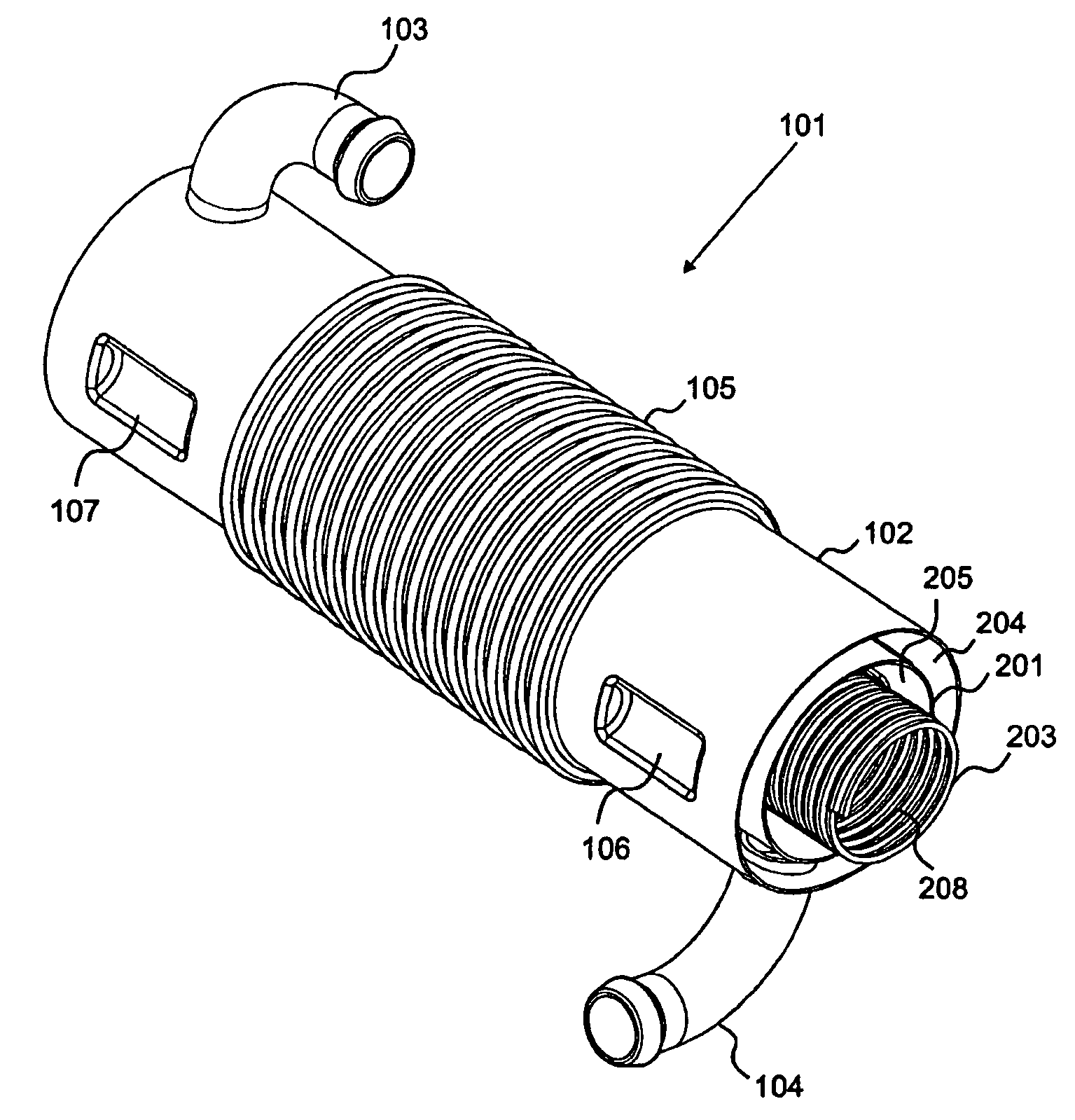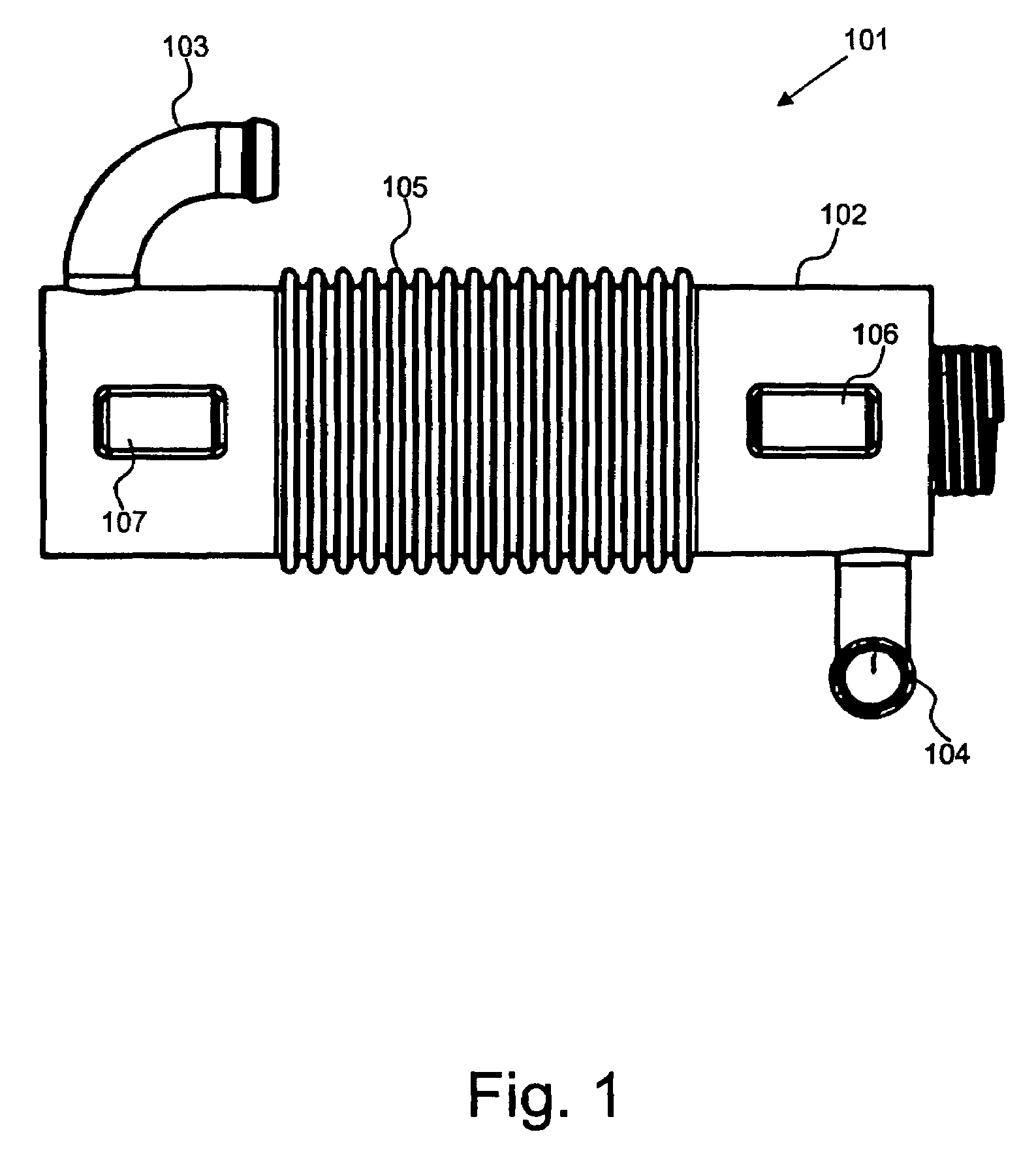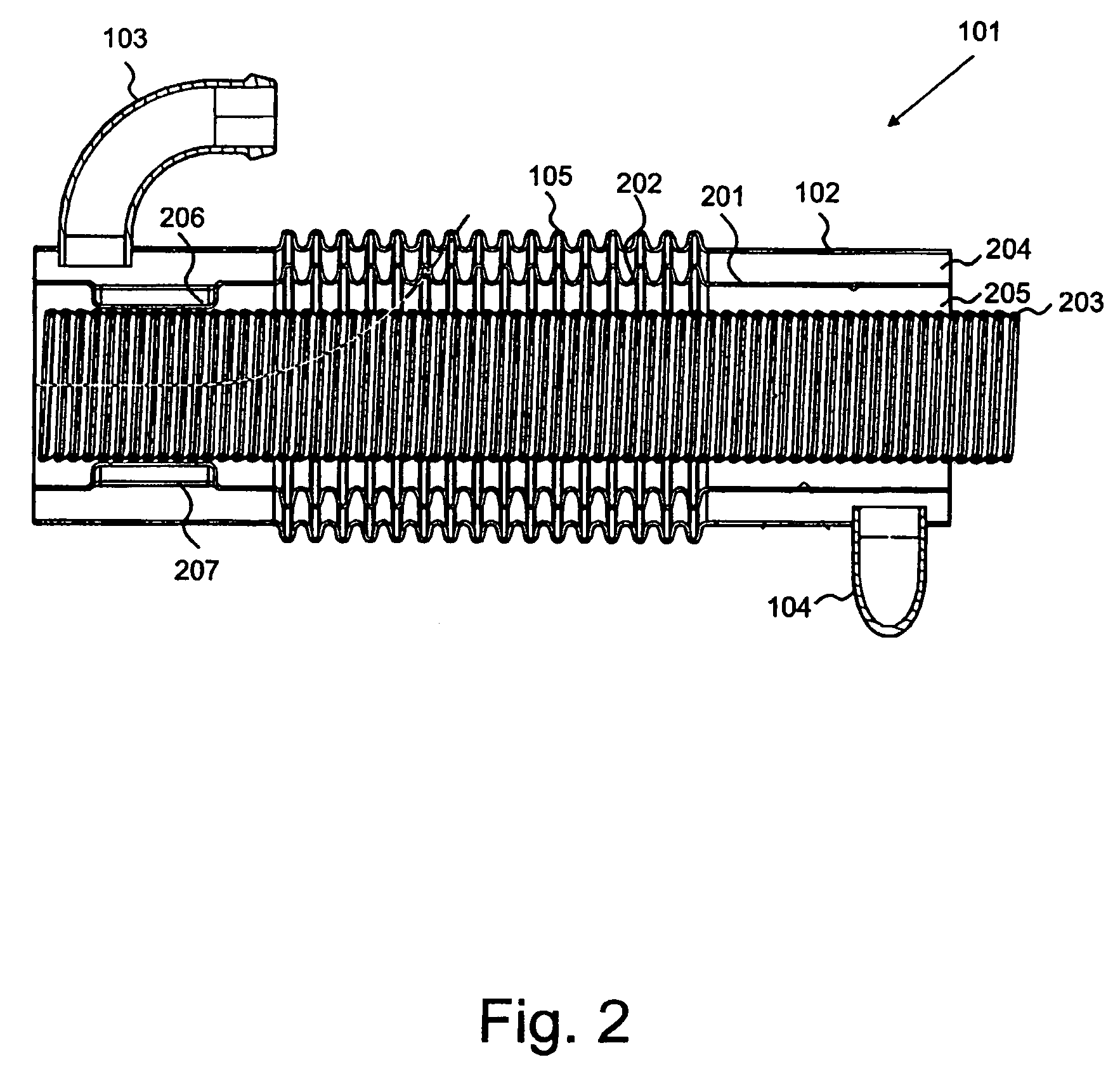Gas heat exchanger
a heat exchanger and gas technology, applied in the direction of stationary tubular conduit assembly, exhaust gas recirculation, fuel addition to non-fuel substances, etc., can solve the problems of undesirable gas cooling, undesirable further warming, undesirable gas cooling, etc., to reduce contact and reduce undesirable heat exchange
- Summary
- Abstract
- Description
- Claims
- Application Information
AI Technical Summary
Benefits of technology
Problems solved by technology
Method used
Image
Examples
Embodiment Construction
[0075]There will now be described by way of examples several specific embodiments contemplated by the inventors. In the following description numerous specific details are set forth in order to provide a thorough understanding. It will be apparent however, to one skilled in the art, that the present invention may be practiced without limitation to these specific details.
[0076]Throughout the description, the following terms are used:
[0077]‘Gas cooling conduit’ refers to a conduit through which gas is configured to pass when heat extraction from the gas is required.
[0078]‘Coolant conduit’ refers to a conduit through which coolant medium such as coolant fluid is configured to pass. A coolant medium may be used to reduce the temperature of the gas in the gas cooling conduit, or may be used to extract heat from the gas in the gas cooling conduit to be used elsewhere.
[0079]‘Bypass conduit’ refers to a conduit through which gas is configured to pass when heat extraction from the gas is not...
PUM
 Login to View More
Login to View More Abstract
Description
Claims
Application Information
 Login to View More
Login to View More - R&D
- Intellectual Property
- Life Sciences
- Materials
- Tech Scout
- Unparalleled Data Quality
- Higher Quality Content
- 60% Fewer Hallucinations
Browse by: Latest US Patents, China's latest patents, Technical Efficacy Thesaurus, Application Domain, Technology Topic, Popular Technical Reports.
© 2025 PatSnap. All rights reserved.Legal|Privacy policy|Modern Slavery Act Transparency Statement|Sitemap|About US| Contact US: help@patsnap.com



